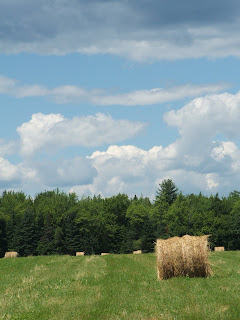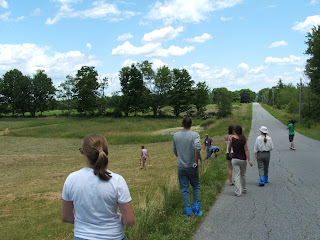The farm hosted a pasture walk this afternoon featuring several presentations and discussions about milk qualities, pasture management, research projects in organic dairy. We also shared our operation with a tour of the creamery, a look at the cows and discussions about licensing and creamery production.
http://www.wabi.tv/news/31649/study-aimed-at-improving-organic-milk-quality
http://www.wlbz2.com/news/local/story.aspx?storyid=206831
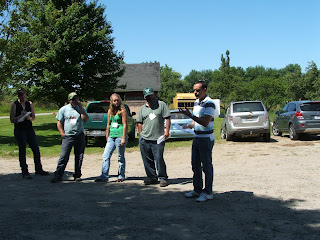 |
| Andre presents findings of University studies |
Andre F Brito, DVM, PhD professor of Organic Dairy Mangement at UNH, update the group on several research projects that have concluded (including the evaluation of cornmeal or molasses as an energy source while animals are on pasture and kelp meal as a feed additive) as well upcoming projects, including the research in which our farm is participating. The research project is a four year endavour, with farms in five states participating, in which flax seed will be used as a feed additive to enrich the level of Omega-3 fatty acids and CLA in the milk. Amy Beliveu, a Graduate Student in UNH's Nutrition Program, talked about her research project that focused on measuring carotenoids in milk and milk products (mozzarella), in both the conventional (confined) and organic (pastured) dairy herds at UNH. She found that carotenoid levels were lowest in the beginning of grazing season and increased, with the highest levels during the end of the grazing season. The change in carotenoids was shown in the color index of the mozzarella cheese. The confined animals did not show the same trend of carotenoids levels, but remained as a consistent, lower level throughout the sampling time frame (May to November). We found this very interesting- measured data that proves what we see on a seasonal basis- that when the cows are on pasture, eating grasses and forage, the milk is creamier and darker in color in relation to the forages they are eating. During a delicious lunch from CrossTrax in Unity, we shared some of the mozzarella we stretched this morning.
 |
| Rachel talking in the pasture about forage growth |
After lunch, we gave a tour of the creamery and answered questions about licensing, equipment, and inspections. Rachel Gilker (UVM) then walked the group of about 35 farmers, educators and farm enthusiasts through the pastures. She talked about plant species, growth, grazing height, DM intake, and many other aspects of pasture management. Rick Kersbergen (UM) demonstrated pasture forage evaluation equipment and methods.
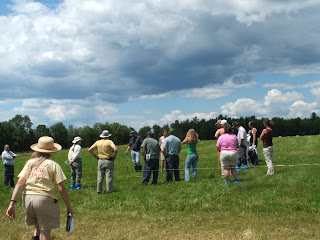 |
| Rick is discussing the pasture sampling equipment the universities are using in the study |
 |
| Heading out to the pasture |
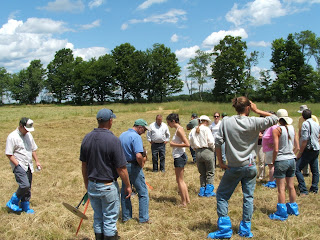 |
| Pasture walk participants discussions on the pasture |
 |
| some of the cows, grazing earlier in the season |

